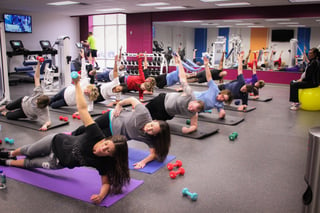 Summer has flown by, unfortunately, and we’re headed into our last long weekend of summer. That obviously means have to have fun and live it up a little, so what better way to enjoy this three-day weekend than by spending time doing some of Indy’s popular activities with your family and friends?! There are a variety of activities available for all ages. You’re probably wondering what in the world there is to do in good ol’ Indianapolis. Some of the popular events include:
Summer has flown by, unfortunately, and we’re headed into our last long weekend of summer. That obviously means have to have fun and live it up a little, so what better way to enjoy this three-day weekend than by spending time doing some of Indy’s popular activities with your family and friends?! There are a variety of activities available for all ages. You’re probably wondering what in the world there is to do in good ol’ Indianapolis. Some of the popular events include:
Family Adventures – You can test your risk taking and adventurous side by going to places like Go Ape! Treetop Adventure, a course at Eagle Creek with rope ladders, 39 crossings, including the log balance and flying carpet, Climb Time Indy, where you can challenge yourself with rock climbing, or Sky Zone Indoor Trampoline Park, which includes a Foam Zone, Ultimate Dodgeball, SkySlam basketball courts, and SkyRobics fitness classes. I have only been to Sky Zone and I must say I had just as much fun as the kids there and it totally wore me out!
ActiveIndy Tours – Enjoy some fresh air while enjoying a view of the city you live in! There are walking tours, biking tours, bike rentals (I’d totally love to try out those new Pacer bikes for my own tour!), running tours, and custom/private tours. You have quite opportunity to listen to stories and explore history! Another neat little piece of info – the running tour fee is donated to the Back on My Feet chapter, which in turn helps create self-sufficiency within the Indianapolis homeless community. I am one who lives giving back to the community, so I find that pretty neat!
Parks – I can hear that fresh air calling your name now! Did you know that Indianapolis has five recommended parks, White River State Park, Eagle Creek Park and Marina, Fort Harrison State Park, Garfield Park Conservatory and Sunken Garden, and Holliday Park. Each offers a different view or attraction. White River State Park, the park with a few of the finer attractions within walking distance of each other, includes the Indianapolis Zoo (definitely checkout the new Orangutan Exhibit), the Eitlejorg Museum of American Indians and Western Art, NCAA Hall of Champions, Indian State Museum, Victory Field. Eagle Creek Park and Marina is one of the nation’s largest city parks, encouraging you to enjoy the great outdoors and relaxation! The Harrison State Park offers a golf course, historic districts, and beautiful foliage! Garfield Park houses plants from the world’s tropics, and said to be every green thumb’s dream. Every kid’s dream park has to be Holliday Park, considering its slide towers, tunnels, bridges, climbable spider web, and trail along the White River.
Fitness Center – Wanting to try a new gym without making the full commitment on the first day? NIFS offers a 14-day trial pass, allowing you to experience opportunities that fit your fitness level and interest; from group fitness classes, an NBA sized basketball court, to a relaxing steam room or sauna - you’re bound to find something that keeps you motivated and active!
The opportunities for a fun-filled weekend are endless! You can read up and research activities that suit your fancy through the linked words above, but whatever you do, get out this weekend and enjoy every minute of it! Indy’s popular activities aren’t limited to just Labor Day weekend, so if this weekend is filled for you, plan for another weekend to be active and explore Indianapolis’ beauty!
What fun activities does your city offer?


 What if I told you that instead of hitting the pavement for that dreaded 2 mile run, you can walk on your lunch break with a co-worker and keep your heart just as healthy? Sounds more appealing, doesn’t it? We have long known the health benefits of walking, but most people would tell you if you want to be “more fit”, you should bump up the intensity to a run compared to a walk. Before you call your running buddy and cancel, let me explain.
What if I told you that instead of hitting the pavement for that dreaded 2 mile run, you can walk on your lunch break with a co-worker and keep your heart just as healthy? Sounds more appealing, doesn’t it? We have long known the health benefits of walking, but most people would tell you if you want to be “more fit”, you should bump up the intensity to a run compared to a walk. Before you call your running buddy and cancel, let me explain. Most businesses have some kind of space available to host a group fitness class. You don’t have to have dedicated group exercise space with a suspended hard wood floor to get started. An open conference room can work at your site for both mid-day and after work classes.
Most businesses have some kind of space available to host a group fitness class. You don’t have to have dedicated group exercise space with a suspended hard wood floor to get started. An open conference room can work at your site for both mid-day and after work classes.
 It’s busy at your community; sometimes it’s so busy that residents complain they have a hard time choosing what program to attend. Inevitably, the calendar is so full they have to miss events they love in order to attend something else. And your activities director is at the heart of that bustling calendar.
It’s busy at your community; sometimes it’s so busy that residents complain they have a hard time choosing what program to attend. Inevitably, the calendar is so full they have to miss events they love in order to attend something else. And your activities director is at the heart of that bustling calendar. 
 You have established an employee wellness program for your employees, maybe you even have an onsite fitness center available free of cost to your workforce. What you’re finding is that after a long shift of being on their feet, and a couple hours of over-time your workforce is exhausted. It’s hot, some of their work areas do not have air conditioning and they feel they have sweat enough and now you want them to exercise? They already feel like you control their lives, they are work 6 days a week and they don’t want to be required to do more. They are ready to get home, spend some time with their families before waking up to do it all over again. As the employer you are left feeling like your investment isn’t being utilized by employees. It can be frustrating, it's free to them, you have provided top notch equipment, what else could they want? Consider what has been implemented and survey your employees and find out what barriers keep them from utilizing your onsite corporate fitness center or participating in wellness offerings.
You have established an employee wellness program for your employees, maybe you even have an onsite fitness center available free of cost to your workforce. What you’re finding is that after a long shift of being on their feet, and a couple hours of over-time your workforce is exhausted. It’s hot, some of their work areas do not have air conditioning and they feel they have sweat enough and now you want them to exercise? They already feel like you control their lives, they are work 6 days a week and they don’t want to be required to do more. They are ready to get home, spend some time with their families before waking up to do it all over again. As the employer you are left feeling like your investment isn’t being utilized by employees. It can be frustrating, it's free to them, you have provided top notch equipment, what else could they want? Consider what has been implemented and survey your employees and find out what barriers keep them from utilizing your onsite corporate fitness center or participating in wellness offerings.
 Every morning I am hitting up the NIFS Fitness Center working towards the goal to stay healthy and fit. I see all types of people with different fitness interests; those who participate in group fitness classes, those who always do cardio, or those who strictly lift weights. No matter their interest, I am always curious about their fitness journey. Why did they start? What is their progress? Are they working towards a goal? My usual gym routine consists of mostly lifting weights and getting in some cardio as well. I try to keep it balanced, but it is occasionally difficult. Being female and lifting heavy weights just seems to be so wrong and unattractive to some these days, but why? Wouldn’t you think that
Every morning I am hitting up the NIFS Fitness Center working towards the goal to stay healthy and fit. I see all types of people with different fitness interests; those who participate in group fitness classes, those who always do cardio, or those who strictly lift weights. No matter their interest, I am always curious about their fitness journey. Why did they start? What is their progress? Are they working towards a goal? My usual gym routine consists of mostly lifting weights and getting in some cardio as well. I try to keep it balanced, but it is occasionally difficult. Being female and lifting heavy weights just seems to be so wrong and unattractive to some these days, but why? Wouldn’t you think that